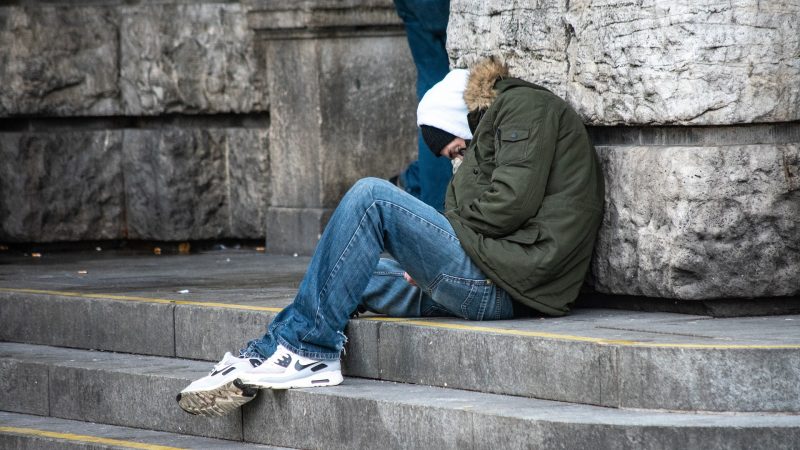Topics of priority need, intentionality and local connection play a role in increasing rates of homelessness for care leavers

Kerrie Portman is a queer autistic care leaver who has experienced repeated homelessness. Currently studying at the University of Cambridge, Kerrie was one of the winners of ’30 To Watch Politics’ 2022 for her campaign work against care leaver homelessness.
Around 25% of England’s homeless population is estimated to have been in care, whilst a third of care leavers become homeless within the first two years of leaving care. Over 11,000 young people age out of care each year, often reporting feeling unready and alone, already often with traumatising pasts, intersectional needs and lacking safety nets the majority of our non-care experienced peers hold.
I am a queer, autistic care leaver and have been homeless three times in my life, two of which were after I left care. Both times I was homeless as a care leaver, the Local Authority knew. They knew I was initially in unsafe housing with black mould so thick it was fluffy, knew I was in A&E because of the way it affected my lungs and knew I was sleeping on a damp mattress on the floor. They refused me help and then refused me help when I became homeless. I was told by the council that even though my accommodation was unsafe if I left I would be considered ‘intentionally homeless’ and not receive support. I was told because I’d turned 22 four months prior, I was not considered ‘Priority Need’ because I was over 21 and so would need to wait 6 years for housing support. I was told that because I didn’t have family living in the area because I was in care and because I’d not lived in the area long enough because I’d moved there running away from domestic abuse then I didn’t have ‘Local Connection.’
I became homeless in winter and I was told by the council I didn’t “deserve” a home. I don’t know what a person needs to do to deserve or not deserve a home, but what I do know was that if I’d had family, and friends, been a few months younger, hadn’t needed to run away due to abuse, hadn’t had an abusive landlord and hadn’t repeatedly fallen through cracks in the law then maybe I wouldn’t have been on the street that winter, thinking I’d die and not thinking that was a bad thing because I was in such a hopeless situation.
More recently, I have been advised by safeguarding professionals that I need to move to a different Local Authority due to concerns over abusers knowing my address. However, local connection tests are partly based on how long I’ve lived in an area, meaning I am forced to choose between following safeguarding advice and moving to somewhere I will need to restart building a local connection or be in danger in my own home. For me, the two overarching issues with the Local Authority were apathy and legal loopholes. At no point during my housing crisis and homelessness did anybody tell me I didn’t have needs. I was simply given constant excuses as to why they were not going to help me, which cracks in legislation I fell through. At no point during my housing crisis and homelessness was anybody kind to me. I later met the leader of that council and she bullied and abused me further. Around 25% of England’s homeless population are care experienced, whilst a third of care leavers become homeless within the first two years of leaving care, which shows my story is not unique.
Topics of priority need, intentionality and local connection and their role in increasing rates of homelessness for care leavers are being highlighted by Just For Kids Law, a charity I campaign with. Some Local Authorities are also passing motions to ensure that being a care leaver is a protected characteristic. This would provide care experienced people with additional legal protections against being discriminated against for having been in care, including addressing systematic police abuse and housing neglect rife amongst councils.
One way to prove a local connection to an area is by having family who live there. I argue this is discrimination against care leavers. Not having a family is not something we can control and it is not our fault if we don’t, yet we are punished for it. On top of this, a child may be taken into care because their family are abusive, which then pushes care leavers to live in a dangerous situation as a young and vulnerable adult. As a care leaver, you are classified as a priority need for housing until the age of 21, though campaigners are trying to raise this until 25. But 25 is still placing an arbitrary cut-off line. There are many issues with this; it ignores the wider holistic picture of intersectional needs, people can fall into a housing crisis at any age and people of every age fall on family as a safety net to avoid homelessness.
The 2017 Children and Social Work Act introduced the concept of Corporate Parenting for Local Authorities and councillors. They are our parents. I would like them to remember this when creating and implementing housing policies.
(Picture credit: Useche70)
Left Foot Forward doesn't have the backing of big business or billionaires. We rely on the kind and generous support of ordinary people like you.
You can support hard-hitting journalism that holds the right to account, provides a forum for debate among progressives, and covers the stories the rest of the media ignore. Donate today.



